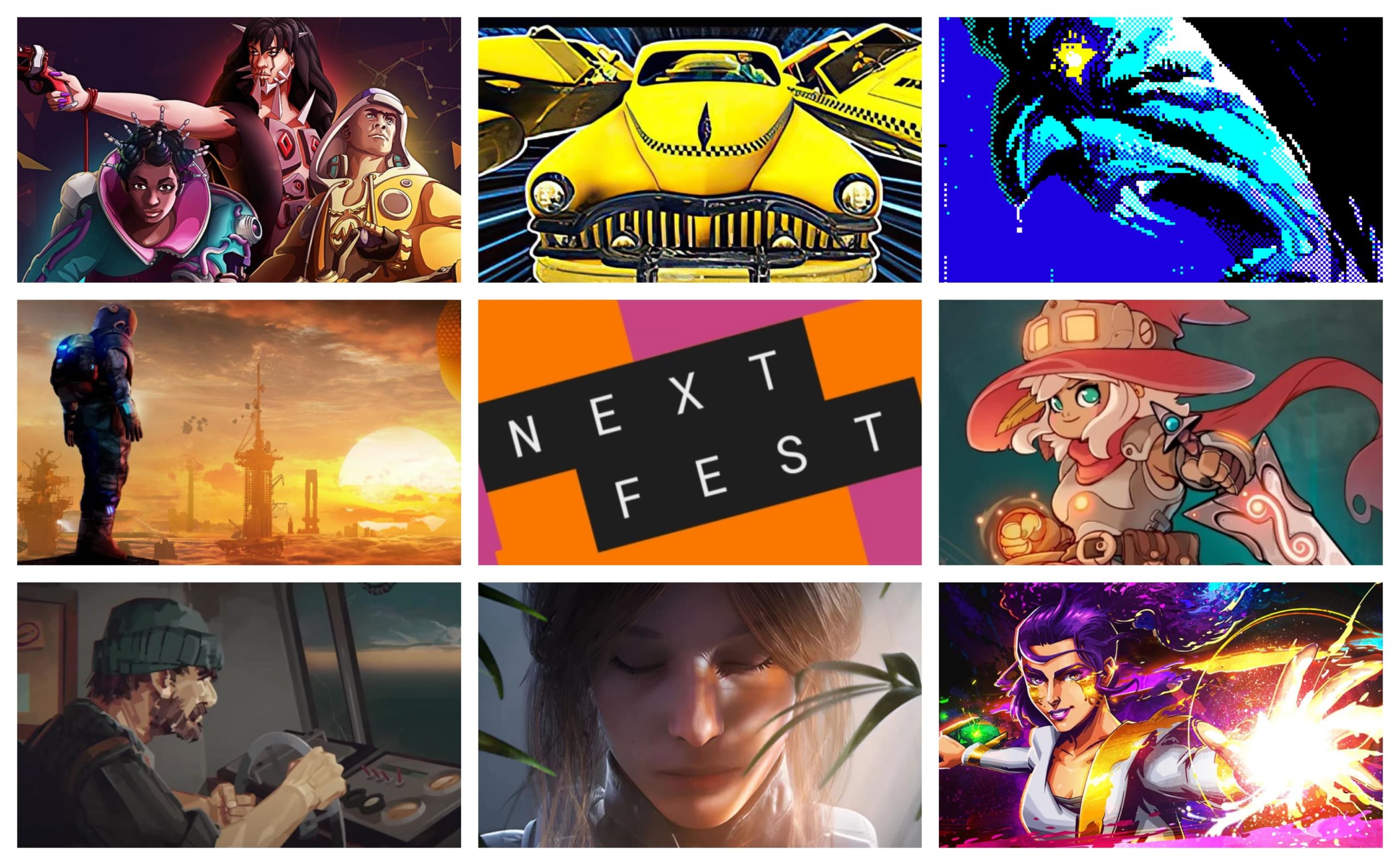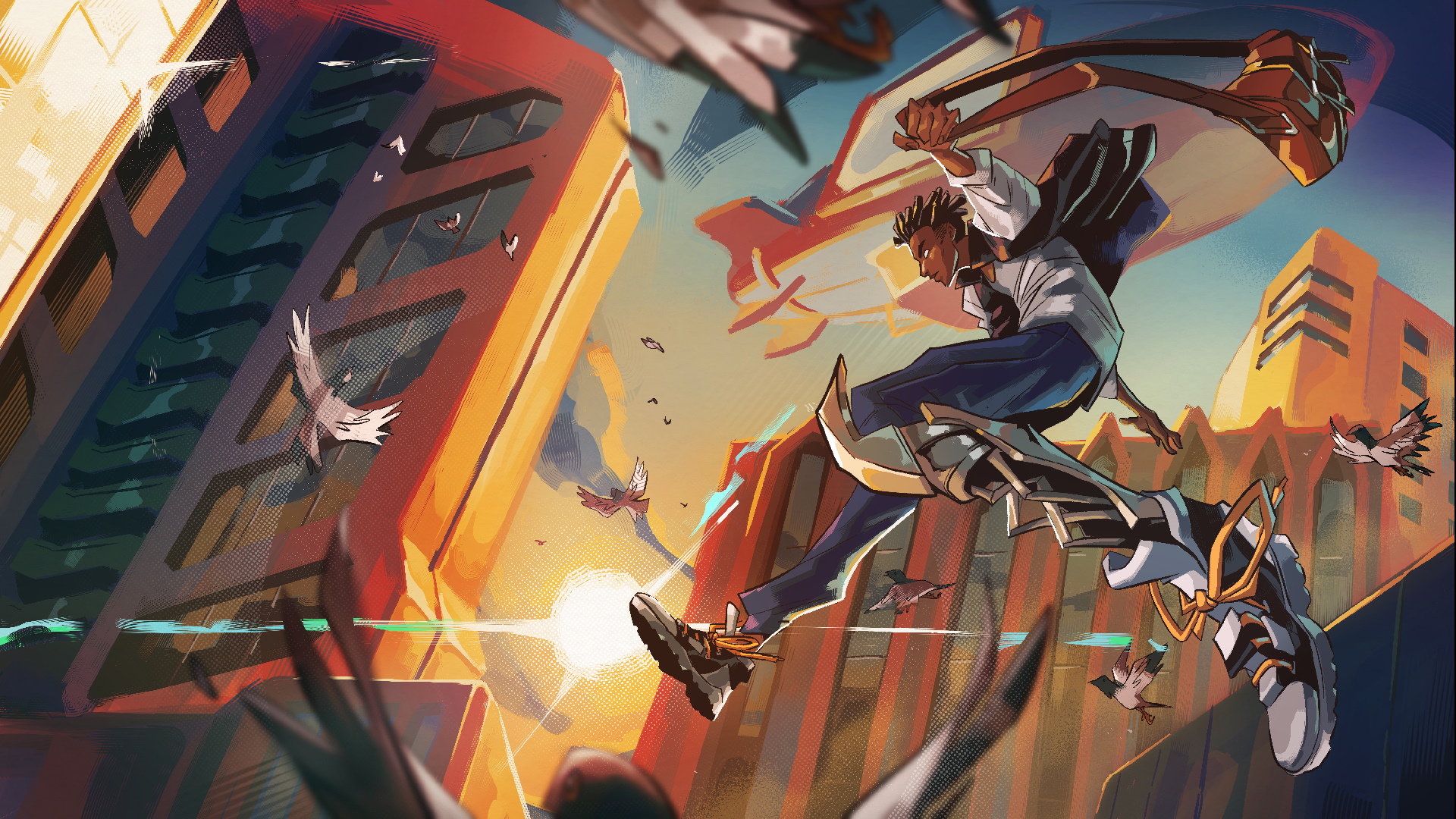Haiku, the Robot Review (Switch) – Well-Oiled Machine
As we’re continuously riding the wave of indie Metroidvanias, it’s becoming increasingly difficult to sift through either the titles that are worth your time or do a great job of bringing in new players. Haiku, the Robot has both those attributes and with a new physical release from Super Rare Games complete with all the new content updates for the Nintendo Switch, there isn’t a better time to dive in.
Haiku, the Robot is a 2D Metroidvania with a precious pixel art style that wears its influences well on its sleeves. Recent games like Hollow Knight and some old-school titles like Metroid Fusion were at the forefront of my mind during my 10 hours of playing the base game. However, Haiku, the Robot’s strength is taking that inspiration and tinkering with its own direction. Building a game that would fulfil Tin Man’s wish of having a heart. But is there anything rusting the overall package? Let’s get into the nuts and bolts of it all.
Robots in the Rain
You play as the titular Haiku, an adorable spherical robot awakened under mysterious circumstances. You roam the post-apocalyptic, post-human world of Arcadia – a city built from robots using the remains of a nuclear catastrophe. As you explore, you encounter virus-infected machinery that acts as the enemies and bosses of the game.
Your goal is to discover the mystery behind the virus and restore Arcadia to the heights before its corruption. Haiku, the Robot’s story starts off simple enough, but I wasn’t expecting a deep and introspective tale. Like the machinery that runs our day-to-day, there’s the subtly intricate detail inside the shell that rewards the ones who look into it.
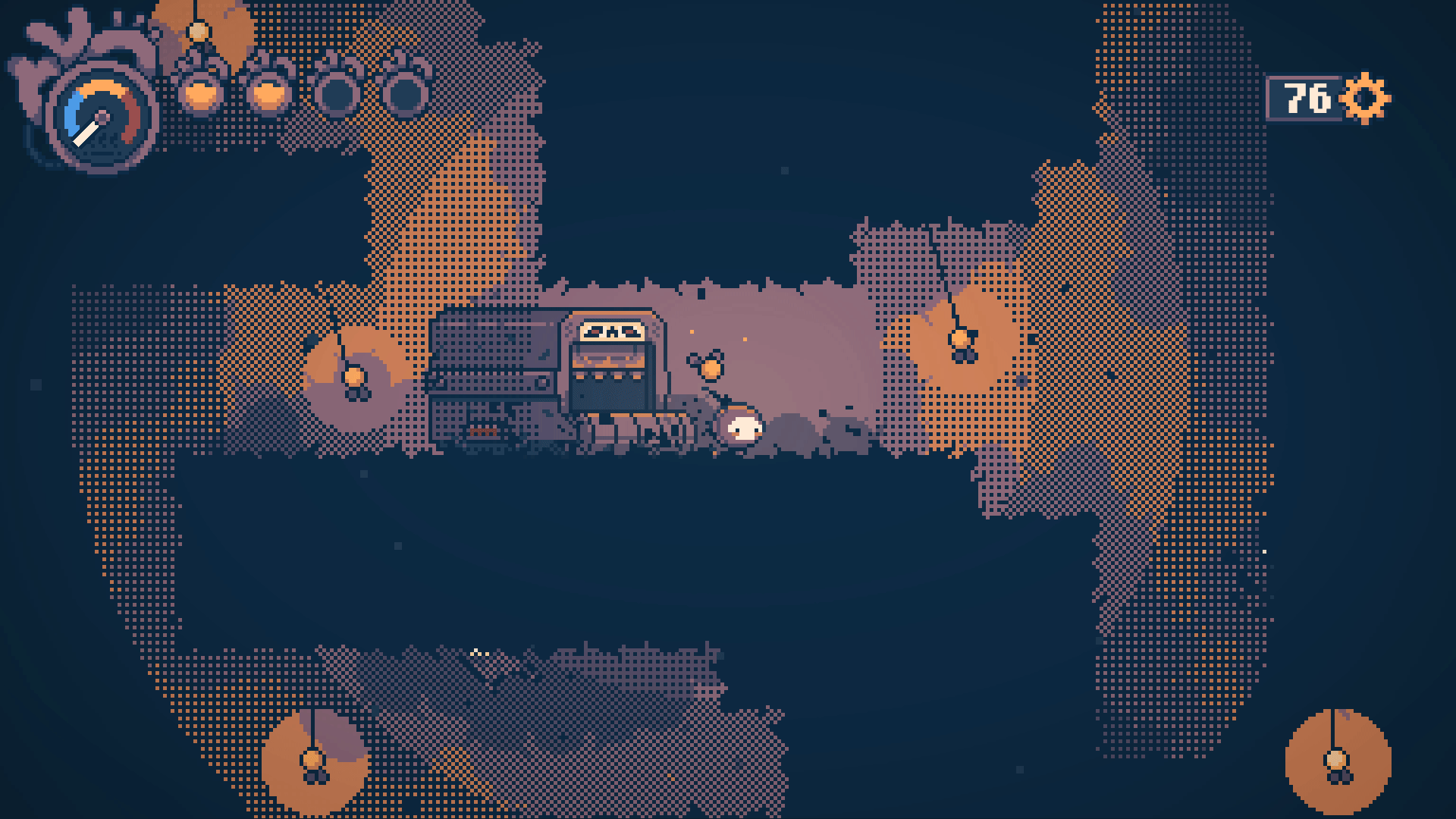
Dialogue from the robotic NPCs you come across is often cryptic, and the world you occupy visually tells just as much of the story as you explore. Arcadia is rich with lore and every character you cross paths with adds so much to the game without getting in the way of the gameplay. It’s all rewarding as you come across the twists and turns of the narrative, but the motive outside of just exploring feels pretty light for the first few hours, giving a slightly uneven pace.
All Rusting Like a Virus
The gameplay is at the forefront of Haiku, the Robot, with the story being an accompaniment. It’s an amazing feat that this is the official debut for Mister Morris Games, as the overall gameplay is almost flawless. As I mentioned, the game is a 2D Metroidvania and as such the exploration is half the battle of being fun to play. This is truly where the game shines brightest.
At the start, Haiku has a floaty jump that you can manipulate via your button press. As you progress you get new traversal mechanics like a double jump, rolling as a ball, and a grappling hook amongst others. Of course, most if not all of those have been done before, but the level of design makes the explorative nature feel refreshing. It also speaks to the accessible nature of the game, as the platforming makes all the facets feel overall easier than other Metroidvanias.
Falling in traps isn’t instadeath, enemies are neat in design but easy enough to jump around, and there’s also a uniquely great mechanic – an adjustable wrench. The wrench converts the parts (currency) you gather through defeating enemies into health when you hold ‘RB’. It perfectly creates a give-and-take for players, making it almost impossible to die if you’re consistent at fighting enemies and careful with your steps. Enemies have very basic attack patterns and they’re not all too threatening, this might be a problem for some veterans of the genre, but it was a breath of fresh air to not feel pressure when exploring.
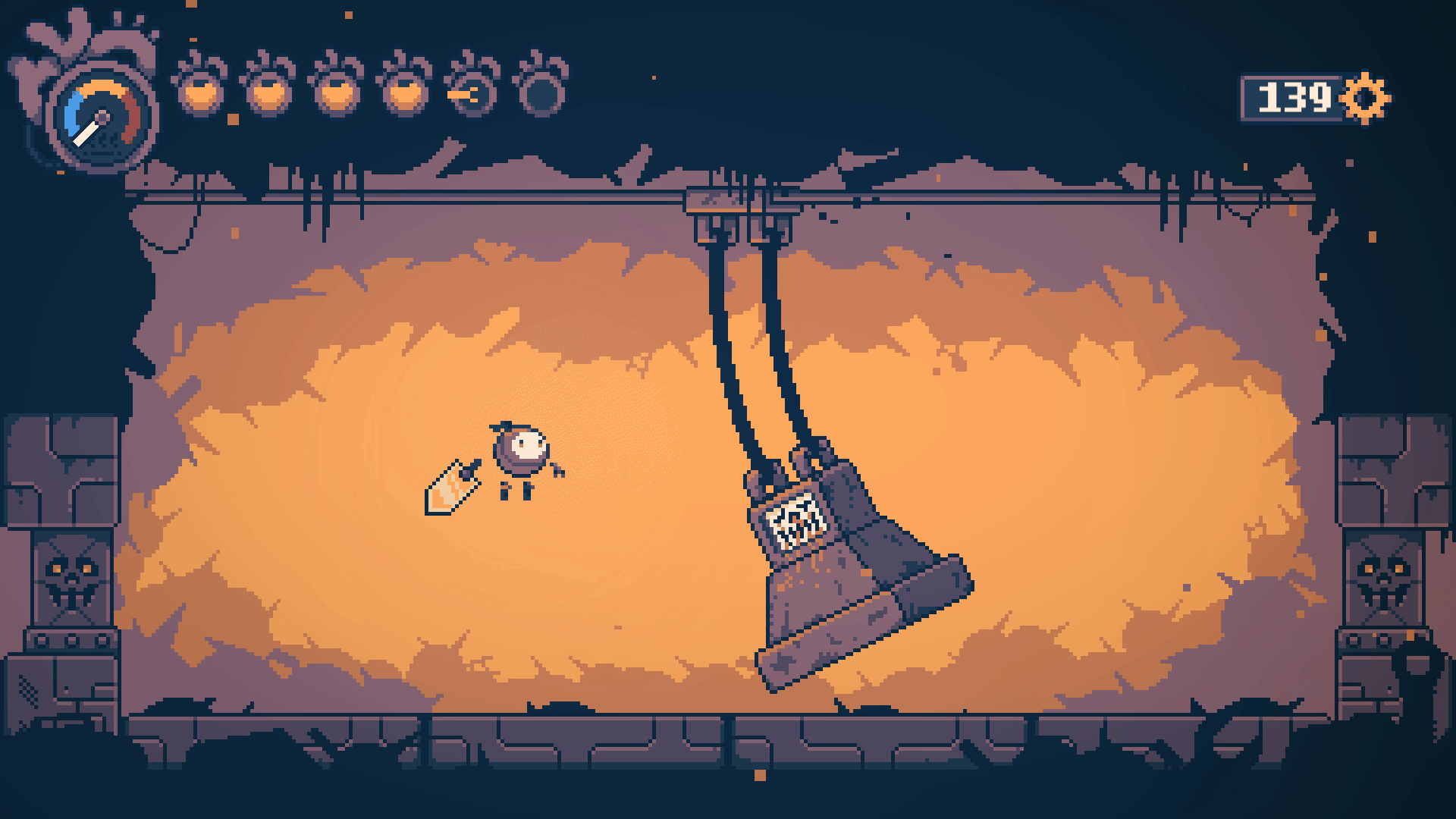
But There Is No Pain
Whilst it is overall easier and enemies aren’t opposing, the combat is a little simplistic. You have your basic attack with your sword and a pogo-esque attack bouncing on the enemy, but that’s about it. The variety is instead in the microchips. You can equip these at the checkpoints that you find across the map which slightly adjust your abilities. Higher chance of a critical hit, faster attacks or defence against some of the elemental damage in the game, it doesn’t change much but you can lean into a way you want to play.
You can upgrade the number of microchips you can equip along with your health by finding fragments of items that just add even more of a reason to explore the depths of Arcadia. The rate at which I found secrets and how seamless the exploration feels made Haiku, the Robot so pleasant to play. The base game is on the shorter side if you compare it to its peers, but the trade of hours played is instead a more consistently fun game that feels jam-packed with secrets/items to find.
Boss Battles are also a highlight as they’re superb in design with great move sets that are the real challenge of the game. Thankfully, there are a lot of them and all feel unique. This is where I usually died the most, as it forces you to not lean on healing between lulls in combat as there really isn’t any compared to the basic enemies. The game doesn’t feel completely different from your first hour to your last when playing the core game, and for some that might be an issue. However, two major updates are now out which are also in the limited physical release, adding more ways to play.
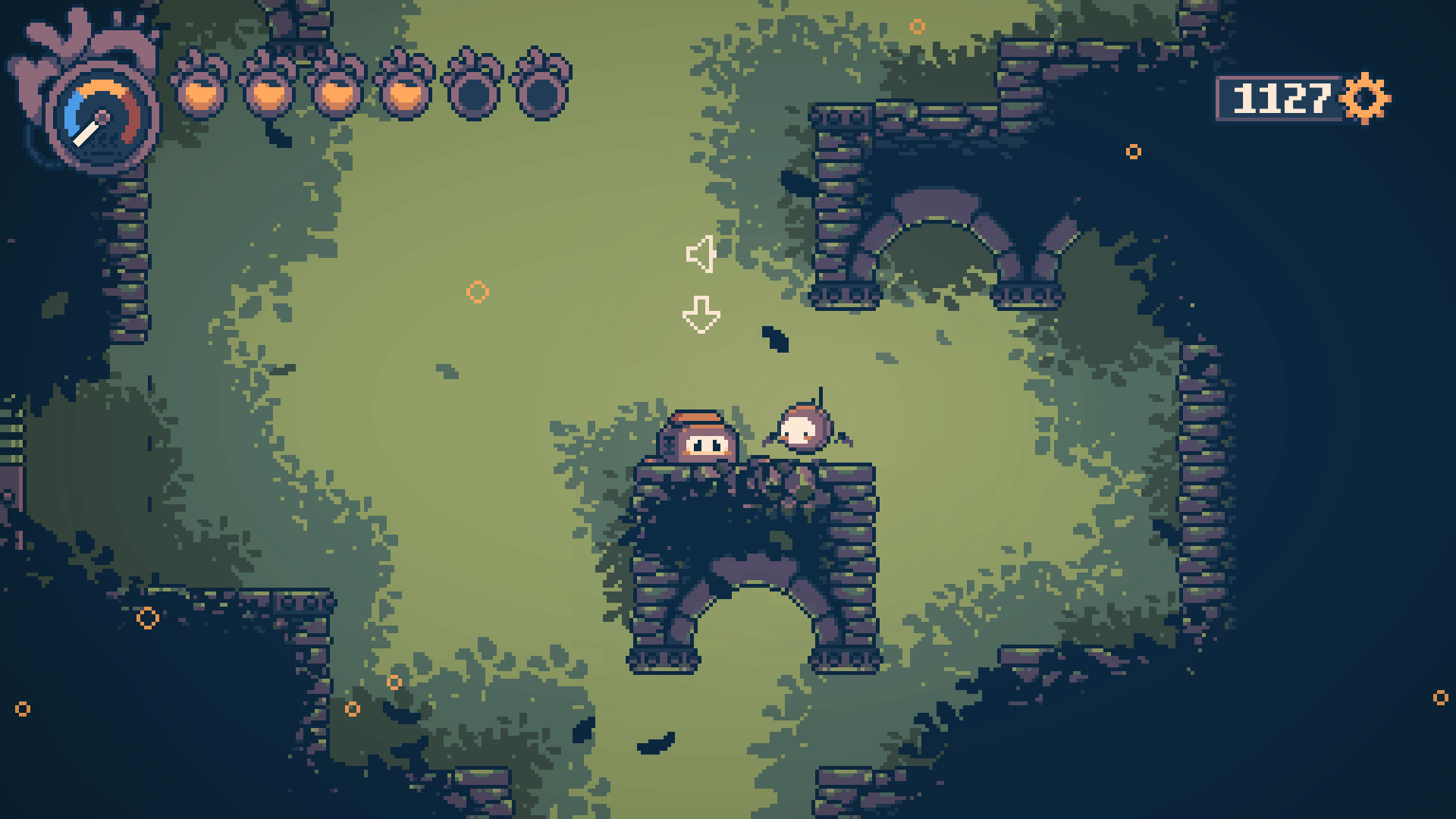
Wow-E
There’s a lot to love about the gameplay, and this is only made better by the exceptional art design. The crunchy pixel art perfectly emanates the robotic nature of the world, showcasing a slew of dynamic character designs all full of character. Not to mention Haiku itself is so adorable, it all creates a juxtaposition of the danger and the beauty of the setting.
The music isn’t extremely memorable, lacking any personal highlights. However, the contextual soundscape of the levels and Haiku really breathes life into the tin shells. The click-clack of the adjustable wrench, the hissing of machinery and the droplets that echo in some of the flooded areas all create a fully realised soundscape. Haiku, the Robot is a game that visually sets itself apart with its in-between style of something like Gato Roboto and Rain World.
A Screw Loose
After you’ve beaten the core game a new area to explore opens up, as well as a new type of mode. The first of which is essentially a hardcore mode, with almost no-health and harder fights. The other and more recent mode is a Boss Rush mode. This pits you against the bosses back to back and if you’re like me and loved those fights the most, then you’re in for a treat. They’re a perfect addition to the already pretty sublime core game mode and just create an even more holistic package.
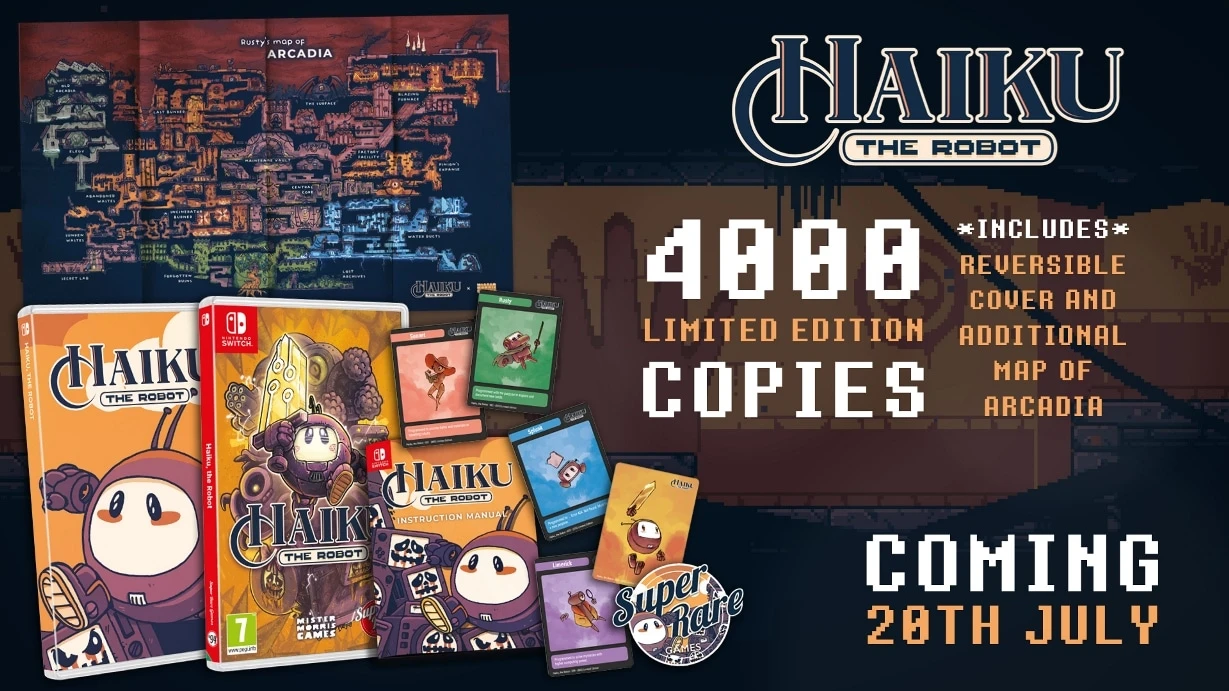
Full disclosure – I was sent a copy of the limited physical edition to review. And as someone who does enjoy collecting physical releases, I think Super Rare Games have crafted a nifty limited release to an already great game. Each copy comes with a map of Arcadia, trading cards of some of the characters from the game, as well as stickers. All at a price point of £36.00, or your regional equivalent.
Overall, I cannot recommend Haiku, the Robot enough to players who haven’t delved into a Metroidvania before. The traversing, healing mechanic and general combat might be a little on the easier side for genre veterans, but it lets those intrigued feel welcome to a potentially uncharted style of game that is always a blast to play. The realised world, the story told and the endearing pixel art style make Haiku, the Robot a standout title. Even with a gameplay time on the shorter side, there’s no better time to check it out.
Haiku, the Robot is an exceptional debut and a wonderful Metroidvania. The content updates and overall gameplay improvements over time have only bolstered the game’s overall package, making it the best time to play. General combat isn’t compelling and the introspective story can get lost, but the exploration and accessibility make the game special.

Haiku, the Robot is available now physically for Nintendo Switch (review platform) as well as PC and Mac via Steam.
Developer: Mister Morris Games
Publisher: Super Rare Games
Disclaimer: In order to complete this review, we were provided with a promotional copy of the game. For our full review policy, please go here.
If you enjoyed this article or any more of our content, please consider our Patreon.
Make sure to follow Finger Guns on our social channels. Twitter, Facebook, Twitch, Spotify or Apple Podcasts – to keep up to date on our news, reviews and features.


